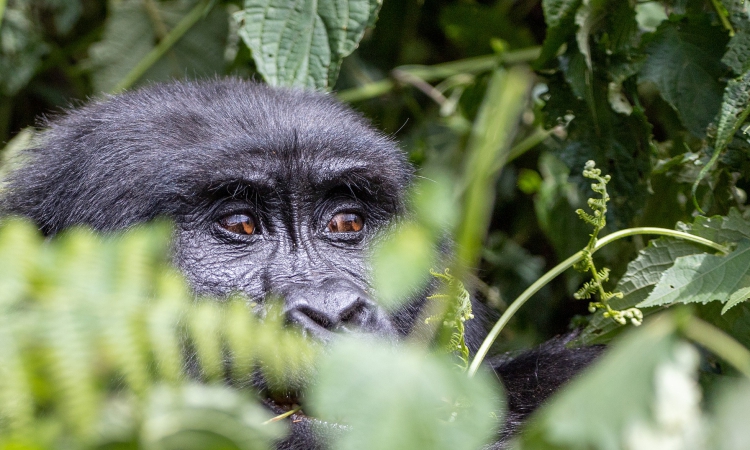How Strong Are Gorillas? Gorillas are far more powerful than any human being. Although mountain gorillas are powerful primates, they don’t display their strength most of the time because they are gentle and peaceful creatures.
They prefer spending their afternoons lounging around rather than causing trouble or destruction.
However, they can cause serious damage and harm to those who provoke them, such as poachers.
The gorilla families you will see in national parks are habituated and are unlikely to harm you unless you provoke them and make them feel threatened, for example, by constantly using flash photography.
Therefore, it is highly recommended that you follow the rules and guidelines set out in the guidebook for a successful gorilla trekking experience in Africa.
Gorillas weigh more than you and I combined. In fact, silverbacks weigh as much as 20 adult humans.

They can lift or throw as much as 815 kg, while a well-trained human can only lift about 400 kg.
An adult gorilla can lift up to 450 kg, despite weighing around 200 kg. A single bite from a mountain gorilla can send anyone running for their life, as their large canines deliver an incredibly powerful bite.
A gorilla’s bite force is about 1,300 pounds per square inch (psi), which is much higher than the bite of predatory lions, which have around 650 psi.
It’s best not to let gorillas play with your ears, as you might lose them! Since they often move on all fours, their arms are extremely strong, with grips that can tear down just about any vegetation.
While their physical strength comes from their body structure, their diet and how much they eat also play an important role.
Mountain gorillas can eat up to 34 kg of food daily! Their diet mainly consists of vegetation, fruit, and small insects like ants, all of which contribute to their overall health and physical condition.
Gorillas share 98% of their DNA with humans, and they also exhibit a wide range of emotions.
They have about 25 different vocalizations for when they feel threatened or in danger.
When attacked or threatened by humans, they will shout, scream, or bellow in response.
Gorillas also express joy when they find something funny, and they may even chuckle! Their chest thumping is a symbol of strength and a reminder to opponents that they are stronger and capable of conquering them.
Now that you are familiar with a gorilla’s strength and capabilities, it’s important to be cautious and avoid provoking them.
If you are ever attacked by a gorilla, whether it’s a silverback or any other gorilla, the best thing to do is to bow your head in submission, keep your eyes lowered, and remain calm.
Following your ranger guide’s instructions is crucial during your gorilla trekking safari.
Travelers should remember to maintain a 7-meter distance from mountain gorillas, as getting too close could make them feel threatened and aggressive, which might result in an attack.
After finding a gorilla family, do not surround it. Respect your boundaries, stay with your group, and leave the gorillas on the other side of the forest.
Surrounding them may be interpreted as an attack, which could provoke them.
Avoid using cameras with flash, as flash photography can lead to an attack because gorillas are not accustomed to sudden flashes of light.
Do not stare directly into the eyes of mountain gorillas, as this can make them feel threatened.
Avoid making any form of sign language, as gorillas may misinterpret your gestures and become aggressive.
Do not touch or carry the gorillas, especially the curious young ones who are playful and might approach you.
Their mothers and the dominant silverback keep a close watch over them and are very protective.
Refrain from making unnecessary noise while in the rain-forest and in the presence of mountain gorillas, as they might misinterpret loud sounds, which could lead to an attack.
In Conclusion
Mountain gorillas are incredibly strong, far stronger than humans, but they are gentle giants that prefer to stay out of conflict.
Embark on your journey to Africa to witness how calm and gentle these great apes are in their natural habitat.










